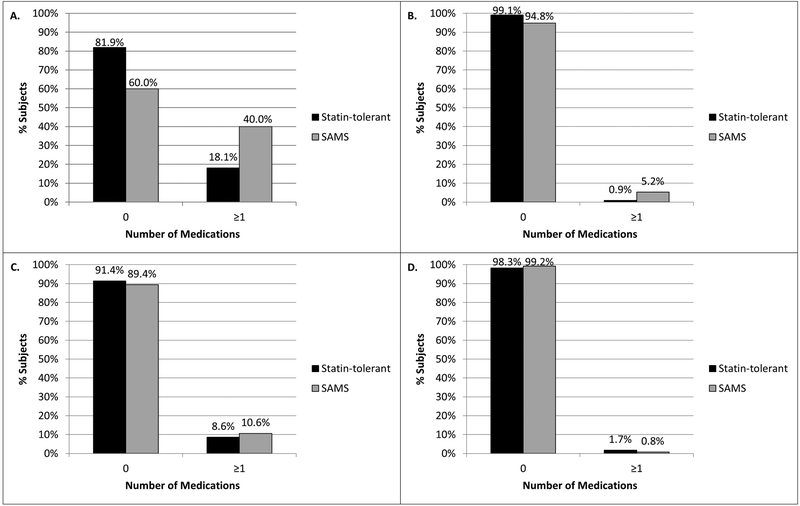Figures 1A-D.
Figure 1A) number of concomitant medications that can treat statin-associated muscle symptoms (SAMS, e.g., analgesics, skeletal muscle relaxants, and coenzyme Q10) in SAMS group vs. statin-tolerant (p<0.0001); Figure 1B) number of concomitant medications that can independently cause myopathy (e.g., systemic corticosteroids and hydroxychloroquine) in SAMS group vs. statin-tolerant group (p=0.038); Figure 1C) number of concomitant medications that can increase statin exposure (e.g. cytochrome P450 [CYP] 3A4 inhibitors in the participants treated with a CYP3A4-metabolized statin) in SAMS group vs. statin-tolerant group (p=0.524); and Figure 1D) number of concomitant medications that can decrease statin exposure (e.g. CYP3A4 inducers in the participants treated with a CYP3A4-metabolized statin) in SAMS group vs. statin-tolerant group (p=0.341). The number of medications in each of these four categories was compared between the SAMS and statin-tolerant groups via the Wilcoxon rank sum test.

